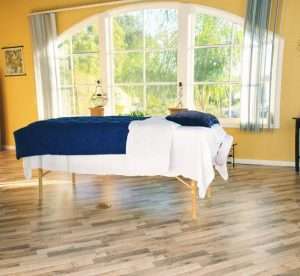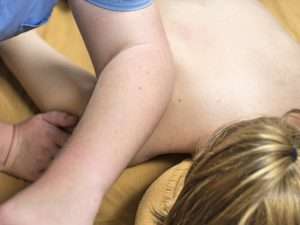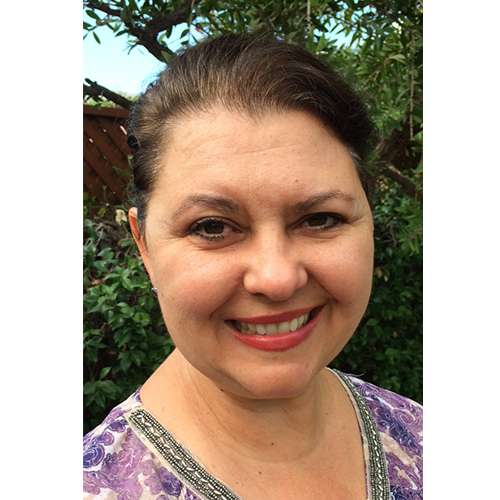 Massage therapy for our bodies can be equated to changing the oil in our cars… It is a self-care maintenance essential for our long-term health and longevity. Massage enhances blood circulation and energy flow, helps to detoxify the body, mind, and spirit, manages or resolves soft tissue pain, and perhaps most importantly, it induces an incredible relaxation and stress relief response. Massage enhances wellness on all levels of our being: physical, mental, emotional, and energetic. However, each massage modality will do so in different ways and with a different focus in mind. Below is a first in a series. Here, I list and explain 5 foundational and popular styles of massage today:
Massage therapy for our bodies can be equated to changing the oil in our cars… It is a self-care maintenance essential for our long-term health and longevity. Massage enhances blood circulation and energy flow, helps to detoxify the body, mind, and spirit, manages or resolves soft tissue pain, and perhaps most importantly, it induces an incredible relaxation and stress relief response. Massage enhances wellness on all levels of our being: physical, mental, emotional, and energetic. However, each massage modality will do so in different ways and with a different focus in mind. Below is a first in a series. Here, I list and explain 5 foundational and popular styles of massage today:
Swedish Massage
When people think of massage, they usually think of this traditional type of massage designed for relaxation. If you are new to massage and bodywork, or if you enjoy light to medium pressure and soothing touch while allowing your mind to float off into space, this is an excellent choice. There are two major strokes used in Swedish Massage…. effleurage and petrissage. Effleurage strokes are long, slow, firm, and flowing. Petrissage is a kneading and rhythmic stroke. A quality oil or lotion is used on the body to create a soothing and moisturizing affect for your skin and to allow the glide needed for these long, flowing strokes. An experienced massage therapist will also use his/her intuition and include more precise work, or friction strokes using their thumbs and fingers, on areas that are sore and need a little extra work. Draping is used with sheets, a blanket, and a warmer on the table so that you feel cozy and safe. Finally, aromatherapy, warm towels, guided breathwork, and relaxing music individualize and complete your experience, and support deep relaxation.

Deep Tissue Massage
As the name implies, the pressure in this massage is deeper and more therapeutic. If you are experiencing pain, or if you are one of many people who need deeper work to induce the relaxation response, this massage is for you. A traditional deep tissue massage will include all of the above strokes, especially in the beginning to warm up your soft tissue, but with gradually increasing pressure. Another stroke called tapotement may be used at times, which is rapid “drumming” on the body. Your massage therapist may also move their entire forearms very slowly along your back and buttocks and other areas as needed to address problem areas. This massage can take longer because the first goal is to address problematic areas, and second to complete a full body massage. Yes, sometimes you may be a bit sore to the touch in those problematic areas after your massage, but the end result is freedom from pain and more freedom of movement…hurrah! A good massage therapist knows that deep tissue work and pressure is relative to your individual body’s needs. They will communicate with you to give you exactly what your body needs where it needs it, and customize your massage experience according to your desires. Deep tissue massage may include Neuromuscular Therapy, Myofascial Release, and/or Muscle Energy Techniques as needed.
Neuromuscular Therapy
Neuromuscular therapy is a style of soft tissue manual therapy which addresses chronic and acute pain and pain patterns in the body by addressing muscles that are subject to spasm and hypertonicity, and their trigger points. Nerve entrapment and compression is also addressed. Trigger points are areas of increased metabolic waste deposits in the muscle which are especially painful, either locally (exactly where they are touched) or referred (the pain travels to another area of the body when the trigger point is touched). When these painful trigger points are found, and directly pressed for short bursts of time (seconds), the pain is reduced. As the pain is reduced, the therapist can carefully give more and more pressure to these trigger points until they dissolve and go away over time. The amount of time it takes to completely dissolve the trigger points and the pain is relative depending on how long the soft tissue pain has been around. I have seen pain completely resolve itself in one session, and I have seen pain patterns slowly improve over a longer period of time- usually months- if massage is given once a week or every two weeks during that time. A good rule of thumb is, the longer you have had the pain, the longer it usually takes to resolve the pain. That is why it is always a good idea to see a massage therapist as soon as any soft tissue pain has begun so we can resolve it quickly. It is even a better idea to be proactive and receive massage regularly (and stretch) to maintain circulation and metabolic waste removal in your muscles so that painful trigger points can be prevented from forming in the first place.

Myofascial Release
Soft tissue pain in the body is not only caused by dysfunction in the muscle, but also by dysfunction in the fascia, or the connective tissue surrounding the muscle. I like to give the analogy of saran wrap wound tightly around a muscle. Fascia is an unending sheath of opaque, tough connective tissue surrounding all of our muscles, tendons, ligaments, bones, nerves, blood vessels and organs from head to toe, and it assists the tissue it surrounds in keeping its shape. The three layers of fascia are superficial (associated with our skin), deep, (associated with our muscles, bone, nerves and blood vessels), and visceral (associated with our organs). Myofascial Release can be superficial or deep. It is a safe and very effective technique that involves applying sustained gentle pressure into the myofascial connective tissue restrictions to eliminate pain and restore range of motion. Even though the pressure is light to medium, it can feel deep, as there is little to no oil used, and, as the fascial restrictions unwind, redness and a warm sensation are stimulated in the tissue. In comparison to regular massage, the movements are very slow and often sustained. Myofascial Release can be incredibly relieving to painful areas in your body as the fascia is allowed to elongate and its “cobweb-like” restrictions release. Myofascial Release sometimes can also initiate an emotional release response, as our feelings and emotions from past events are often buried in our bodies. For this reason, many people who have PTSD, anxiety, depression, or phobias can find safe expression and release of buried emotions using Myofascial Release and Myofascial Unwinding.
MET or Muscle Energy Technique
This technique is also excellent for someone experiencing muscle spasm and/or range of motion issues with chronic stiffness. It is similar to facilitated stretch, but it is also an active technique in that the client and the massage therapist are working together. The massage therapist will carefully take the muscle to its longest position, then on the client’s outbreath, the therapist will have the client resist with opposing pressure for about 6 seconds, then, guiding the client to take a deep breath and waiting for the client’s exhale, the therapist with take the muscle again to its longest position, and hold that stretch for 15-20 seconds. This is repeated 3-5 times to achieve optimal lengthening of the muscle. This process of lengthening shortened or spastic muscles will directly improve range of motion as well as muscle and ligament strength. It is a great addition to therapeutic massage or can be included in a full hour of facilitated stretch for the entire body. Muscle Energy Technique can be applied safely to almost any joint in the body, and it can also prevent injury.
An experienced massage therapist will often intuitively integrate these types of massage in one session for optimal results, if you so desire. This is usually called a customized or integrated massage. Ideally, if you are seeing your therapist regularly, you and your therapist can experiment with these different modalities to find the ones that work best for you and your body, and choose them according to your changing needs.

Angelique Dupre is a Certified Massage Therapist practicing at Soul Body Ojai in Ojai, California. She has been a practicing massage therapist since 1995, and specializes in pain management and stress reduction. Click here for more information about Angelique, or call her for an appointment at 805-798-5924.
